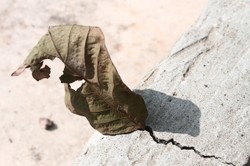After I was informed that blight had arrived I drove to the garden centre to buy some Bordeaux mixture, only to discover that this traditional remedy has been taken out of service by European Union legislation. At this point I imagine the scurrilous anti-EU press trumpeting a headline,EU attacks our potatoes! They missed this one, but there was a reason behind the ban.Bordeaux mixture is composed of copper and slaked lime, but over the years in which it has been applied to soils on farms there has been an accumulation of copper in soils, leading to some toxicity. In excess copper does no good for soil life, such as worms. You can still purchase copper sulphate, but the garden centre had none in stock. However, knowing the need for copper to destroy the fungus I ordered some online when I returned home, express delivery. By the time that I am writing this sentence the copper sulphate has arrived, but the weather is wet and I will need a dry day to apply it. I am unconcerned about toxicity, for I have not overused copper as some farmers have, so my soil is not in danger of having too much of it.
But my neighbour, Ron, the gardening competition judge, had already acted. His potato crop is small and well tended, so he simply lopped off the tops of all the potatoes and dug them up. Doing this when you see the first sign of blight means that you kill the infected leaves before the fungus drops its spores into the soil. If you do this the potatoes are unaffected and are, though smaller than you hoped, perfectly edible. I checked a few of mine by digging them up, and found that they are small, the size of new potatoes, but are fine. I sought Ron's advice, and he suggested that as the infection was not present in all my crop,I monitor it and eliminate only infected plants.
Not all varieties are affected.First and second earlies rarely suffer, but main crop can get the disease badly. The Irish potato famine occurred because the Irish peasants grew a variety called the Lumper, which was a large, starchy,flavourless variety that sold well to the mass market of the English poor. The Lumper was very prone to blight, so Ireland took the full force of the disease. No one grows it now. Some varieties are bred for resistance, but the pathogen can mutate and so no one is really secure.
One important rule. When you rip up the infected plants, do not compost them on your garden compost heap. I took mine to the council tip [garbage disposal centre] and put them in the green waste section. The council works with a recycling company that has a hot composter, which is a tunnel into which the green waste is shoved. The heat inside is so great that break down of tissues is achieved more easily than the domestic compost heap can achieve, so the pathogen dies with the plant tissue,whereas in the domestic heap it can live on to infect more ground.









 Pilgrimage. A review16 days ago
Pilgrimage. A review16 days ago
 Leo the Fourteenthon 05/09/2025
Leo the Fourteenthon 05/09/2025
 The Melsonby Hoardon 03/25/2025
The Melsonby Hoardon 03/25/2025




Comments
Traditional methods have much to commend them.
Thank you!
Phytophthora root rot eliminated lowland chestnut trees (Castanea dentata). President Thomas Jefferson grieved their loss even as President Theodore Roosevelt mourned his blighted highland chestnut trees a century later.
President Roosevelt named those arboreal deaths among the three sources of his bursting into tears (the other two being the death of his first wife and the failure of his Bull Moose Party).
Perhaps those residing in the former Czechoslovakia preserve some "little-tradition," local remedy since their glassmakers traditionally never stressed forested lands, which they turned over as fertile, healthy, non-clear-cut areas for farmers and villagers.
(I rotate among International Society of Arboriculture chapters, of which one membership was the Czech chapter.)
We might get lucky and find a remedy, but fungal disease see are very hard to cure.
That's so sad, so tragic.
Is it possible that those whom anthropogical theory identifies as the little-tradition people invented some local form of blight mitigation or is it possible that the potato blight always is a potential threat?
I am afraid not. They just had to struggle on.
Your comment dated July 9, 2016, and down 7 comment boxes associates blight-free, early-treated soil with a one- to two-year wait.
What did yesteryear Irish growers do during that wait? Did they have access to blight-free soils and tubers?
Quite right about the poor being made to feel full. I do not know why they were named lumped.
The next-to-last paragraph in your second subheading, What to do, mentions that "The Irish potato famine occurred because the Irish peasants grew a variety called the Lumper, which was a large, starchy, flavourless variety that sold well to the mass market of the English poor."
Would the appeal of that Lumper variety be in its size to make the English poor feel full (albeit on something non-nutritious)?
And why would the variety be called lumpers? Internet sources write about lumpers as though they only would be people who unload trucks!
Fungal infection can affect experts. Monty Don, an expert gardener who presents the television programme Gardener's World, someone whose advice I value, lost his box hedges to box blight.All he could do was rip them up and replace them with other species.
Sadly, the blight got into the greenhouse. The speed at which it arrived was unsettling.One day, just a few symptoms, next day, despite spraying,it was all on one side. I sprayed again and thinned out unproductive stems to allow air in. My aim is to preserve the tomatoes. We might be in line for some decent weather in the next day or two, which might help.